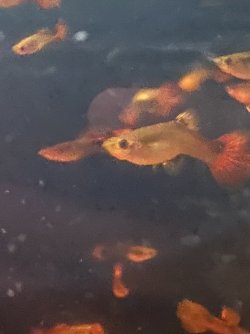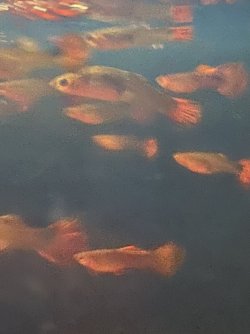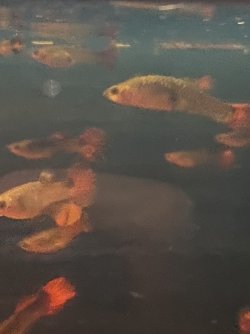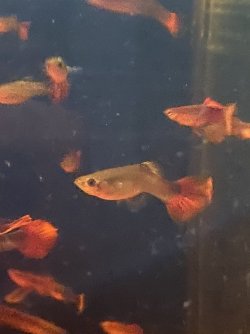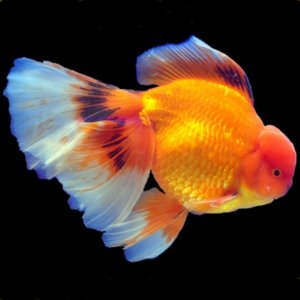You can make a gravel cleaner out of a 1, 1.5 or 2 litre plastic drink bottle.
Cut the bottom off the bottle and throw the bottom bit in the recycling bin.
Remove the cap and plastic ring from the top of the bottle and throw those 2 bits in the recycling bin.
That's the gravel cleaner body
Get a garden hose or length of plastic hose that fits into the top of the bottle. It needs to be a tight fit and a common 12mm garden hose usually works well.
Run the hose out the door onto the garden or into a bucket.
You have a gravel cleaner.
-------------------
The following link has a picture of a commonly sold gravel cleaner about half way down the page. Syphon hose with gravel cleaner.
Aquarium cleaning should take 30 minutes every two weeks. Learn how the professionals do it in 18 easy steps.

www.about-goldfish.com
They all work the same as the home made version. You start the water draining out of the tank. Push the gravel cleaner into the gravel and lift it up and move it to another section of gravel. Push it down and lift it up and move it. Continue doing this until you have removed 50-75% of the water and then stop gravel cleaning. You might only clean half the gravel but do the other half the next water change. The gunk in the gravel gets drained out of the tank with some of the water.
If you have live plants in the tank, leave a couple of inches of untouched gravel around their base and gravel clean the rest of the tan
It's unlikely to be Fish Tuberculosis (TB). That causes fish to die from internal organ failure. The fish usually stop eating, bloat up (get fat) overnight, do a stringy white poop, gasp by the surface or near a filter outlet. They die within 24-48 hours of showing those symptoms.
The guppy in the picture has excess mucous over her back but nowhere else on the body. She has clamped fins and the muscle looks a bit white (under the skin). This is either an external bacterial infection or an external protozoan infection. If you haven't added anything new to the tank in the 2 weeks before they started dying, and there is lots of fish in the tank, I would say it's an external protozoan infection like Costia, Chilodonella or Trichodina. You can usually treat it with salt and cleaning the tank.
--------------------
WHAT TO DO NOW.
Wipe the inside of the glass down with a clean fish sponge. This removes the biofilm on the glass and the biofilm will contain lots of harmful bacteria, fungus, protozoans and various other microscopic life forms.
Do a 75% water change and gravel clean the substrate every day for a week. The water changes and gravel cleaning will reduce the number of disease organisms in the water and provide a cleaner environment for the fish to recover in.
Make sure any new water is free of chlorine/ chloramine before it is added to the tank.
Clean the filter if it hasn't been done in the last 2 weeks. However, if the filter is less than 6 weeks old, do not clean it. Wash the filter materials/ media in a bucket of tank water and re-use them. Tip the bucket of dirty water on the garden/ lawn. Cleaning the filter means less gunk and cleaner water with fewer pathogens.
Increase surface turbulence/ aeration to maximise the dissolved oxygen in the water.
Add some salt, (see directions below).
--------------------
SALT
You can add rock salt (often sold as aquarium salt) or swimming pool salt to the aquarium at the dose rate of 1 heaped tablespoon per 20 litres of water. If there is no improvement after 48 hours you can double that dose rate so there is 2 heaped tablespoons of salt per 20 litres.
If you only have livebearers (guppies, platies, swordtails, mollies), goldfish or rainbowfish in the tank you can double that dose rate, so you would add 2 heaped tablespoons per 20 litres and if there is no improvement after 48 hours, then increase it so there is a total of 4 heaped tablespoons of salt per 20 litres.
Keep the salt level like this for at least 2 weeks but no longer than 4 weeks otherwise kidney damage can occur. Kidney damage is more likely to occur in fish from soft water (tetras, Corydoras, angelfish, Bettas & gouramis, loaches) that are exposed to high levels of salt for an extended period of time, and is not an issue with livebearers, rainbowfish or other salt tolerant species.
The salt will not affect the beneficial filter bacteria but the higher dose rate (4 heaped tablespoons per 20 litres) will affect some plants and some snails. The lower dose rate (1-2 heaped tablespoons per 20 litres) will not affect fish, plants, shrimp or snails.
After you use salt and the fish have recovered, you do a 10% water change each day for a week using only fresh water that has been dechlorinated. Then do a 20% water change each day for a week. Then you can do bigger water changes after that. This dilutes the salt out of the tank slowly so it doesn't harm the fish.
If you do water changes while using salt, you need to treat the new water with salt before adding it to the tank. This will keep the salt level stable in the tank and minimise stress on the fish.
When you first add salt, add the salt to a small bucket of tank water and dissolve the salt. Then slowly pour the salt water into the tank near the filter outlet. Add the salt over a couple of minutes.
Can I use tetra Lifeguard all-in-one treatment instead of all this?

